Download "Managing Drought Risk on the Ranch" Handbook
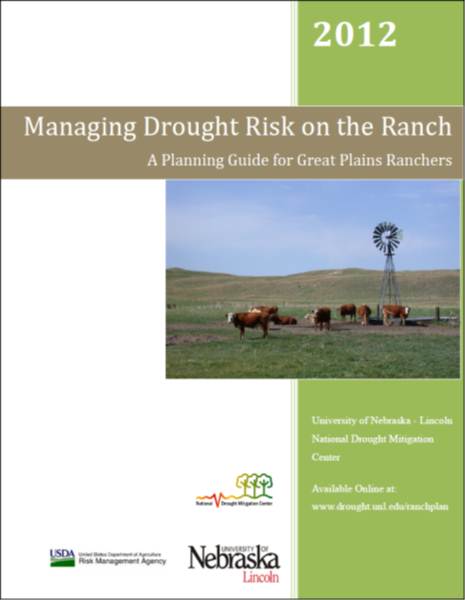
Many range publications recommend that managers develop drought plans. The planning steps provided here have been developed by ranchers throughout the Great Plains, as well as forage, range, and agricultural economics specialists. These steps will help range managers develop a solid plan of action for situations (such as drought) that lead to forage shortages.
Step 1: Form Planning Team
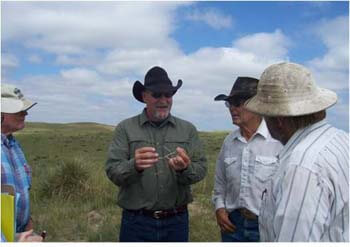 Image: Courtesy Lynn Myers.
Image: Courtesy Lynn Myers.
Drought plans are best developed with input from different perspectives. The drought planning process should involve family members, business partners, and banker, as well as advisors with knowledge of range management, and business and marketing.
Step 2: Set Ranch Vision and Strategic Objectives

A vision statement provides clear direction about “where the business is headed.” (Gates, Dunn et al. 2007) Dealing with drought is just one management aspect of the overall ranch business. Developing a ranch vision and strategic plan for the ranch makes it possible for the manager to fit drought planning into this larger plan.
In business strategic planning, you may also complete a SWOT (Strengths - Weaknesses - Opportunities - Threats) process. In planning for drought, it may be helpful to complete a similar process to identify potential drought management strategies. Image: Courtesy Gates, Dunn et al.
You do not need to develop a whole ranch strategic plan on your own. Your county extension or NRCS office, or private consultant, may also be able to help you think through your goals. Find Extension, NRCS, Consultants by State.
Resources (pdf): Strategic and Scenario Planning in Ranching (Gates, Dunn et al.)
Step 3: Take Inventory
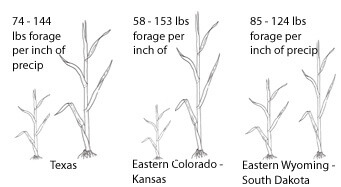
An inventory of resources helps you and all of your partners know what you have to work with. An inventory may include average precipitationand extremes; forage and range resources such as ecological site information, range condition and production, and other feed sources; herd resources such as AUs throughout the year and feed needs; water capacity to support the grazing system; financial strengths and weaknesses; and human resources such as family members' interests and abilities as well as hired labor resources and capacity.
download worksheet pdf
Step 4: Identify Critical Dates and Target Conditions
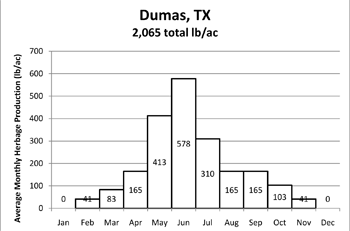
Midpoints of rapid-growth windows for dominant cool-season and dominant warm-season grasses are excellent critical dates for implementing different phases of drought management plans.
Many semiarid rangelands are composed of mixtures of cool and warm-season species. Consequently, it is often helpful to select two or more critical dates when most species of each growth-season category have headed to evaluate the contribution of each component to total herbage production.
Work with NRCS, Extension, or your own advisors to identify the earliest possible indicators of pending forage deficits.
Step 5: Monitor Resources

Monitor key resources on your critical dates, if not more frequently, so that you have the information you need to make decisions. Maintain precipitation and grazing records for every pasture each year. Monitor precipitation and forage availability on critical dates or more frequently. Monitor residual forage after moving animals out of pasture, and keep livestock grazing records throughout the season as animals are moved. Monitor livestock gain and body condition at critical intervals in production cycle, and monitor livestock markets as needed to meet ranch objectives. Range condition, including scouting for indicator species and assessing hydrologic condition of rangeland, should be monitored annually, along with water resources and financial health. Image: Courtesy Pat Reece.
Step 6: Develop Strategies for Preparing for Drought, Responding to Drought, and Recovering from Drought
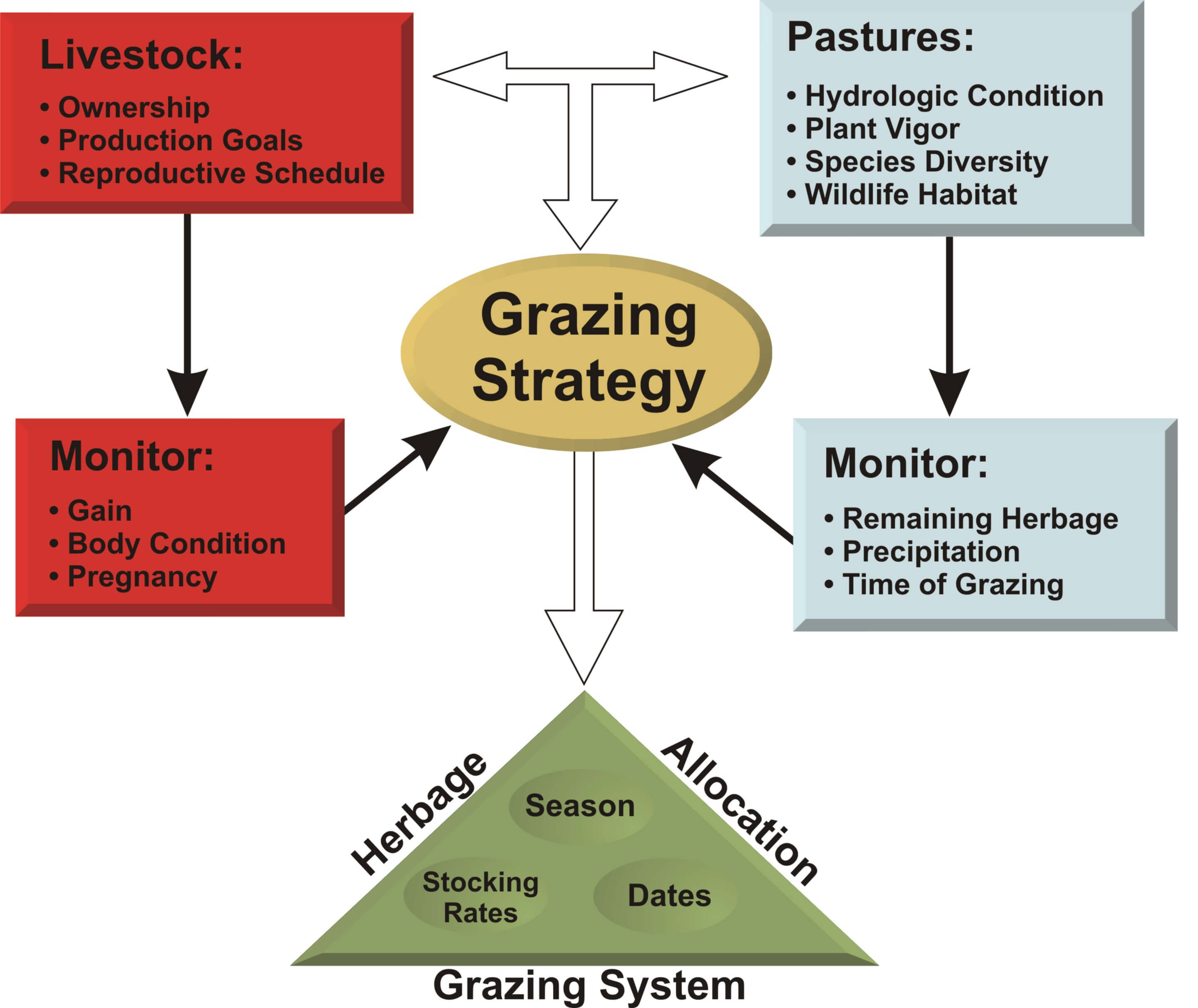
A drought plan will include strategies that you implement before, during, and after drought. Thinking through the feasibility, impact, and cost/benefit ratio of each potential management option will help you identify the strategies that will work best for your operation.
Your list of reasonable options for this year may look completely different from your list of reasonable options for next year. The length of the drought, the severity of the drought, market conditions, and other factors, have a great impact on what you can do during drought.
As you think through management options that you might take before, during, and after drought, you may want to consider whether it moves you towards your goals, whether it is feasible in light of your ranch inventory, whether others have found it be make a real difference, and whether the benefits outweigh the costs of the actions.
Step 7: Implement and Evaluate the Plan

Once you've begun implementing your plan, don't forget to ask periodically - is your drought plan working for you? Is it moving you towards your goals? Are you satisfied with how you managed through a drought, using your plan? Would you make any changes to it?
If you are doing ongoing monitoring of your finances, range, and livestock, you will have a much easier time answering these questions, as you will be able to see trends appearing.
One method of tracking your progress is called the "Balanced Scorecard", described in a publication by Roger Gates & Barry Dunn et al. This approach provides a simple "scorecard" method of tracking performance and goals.
Your drought plan is not a static document. Change it as needed to best meet your needs.